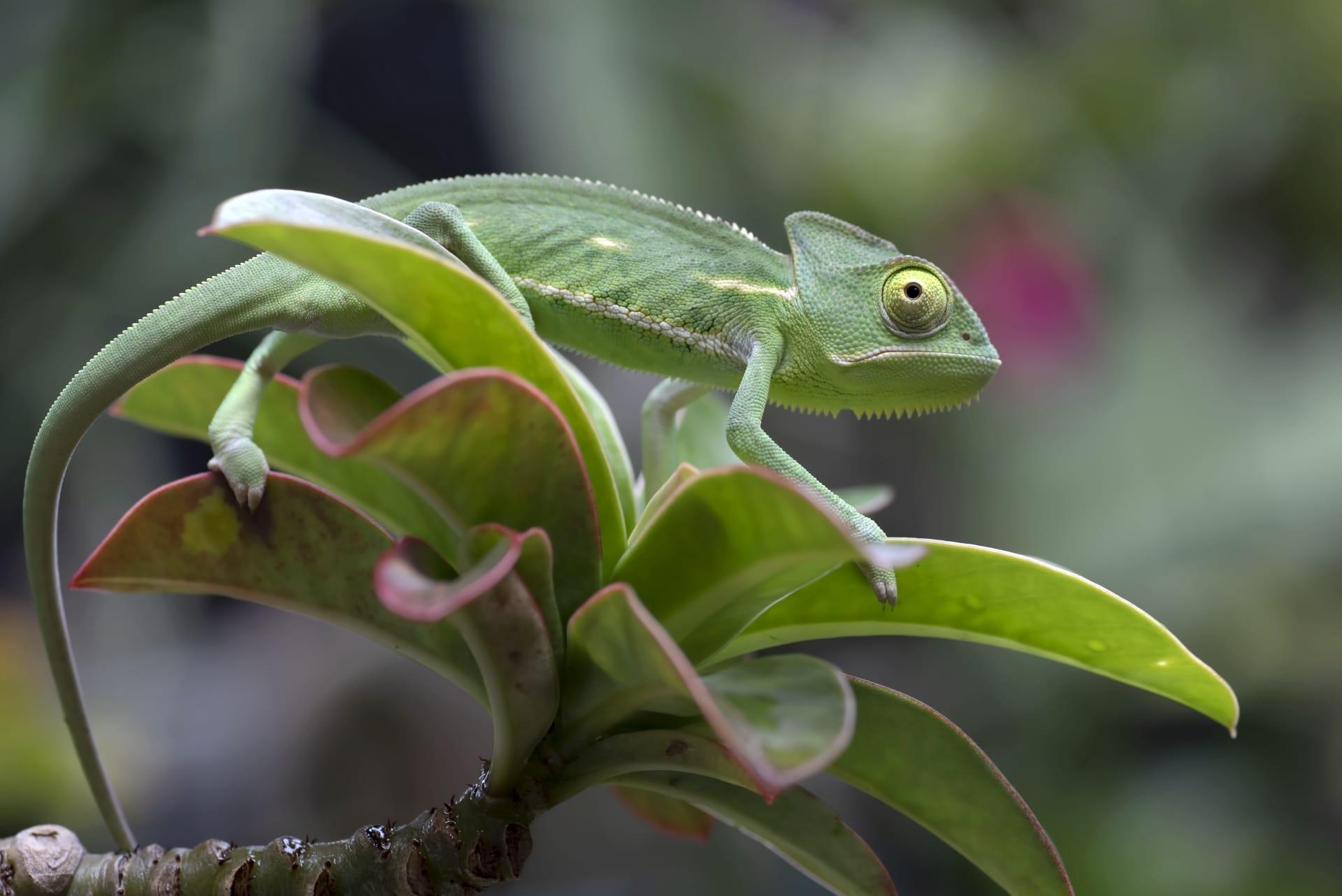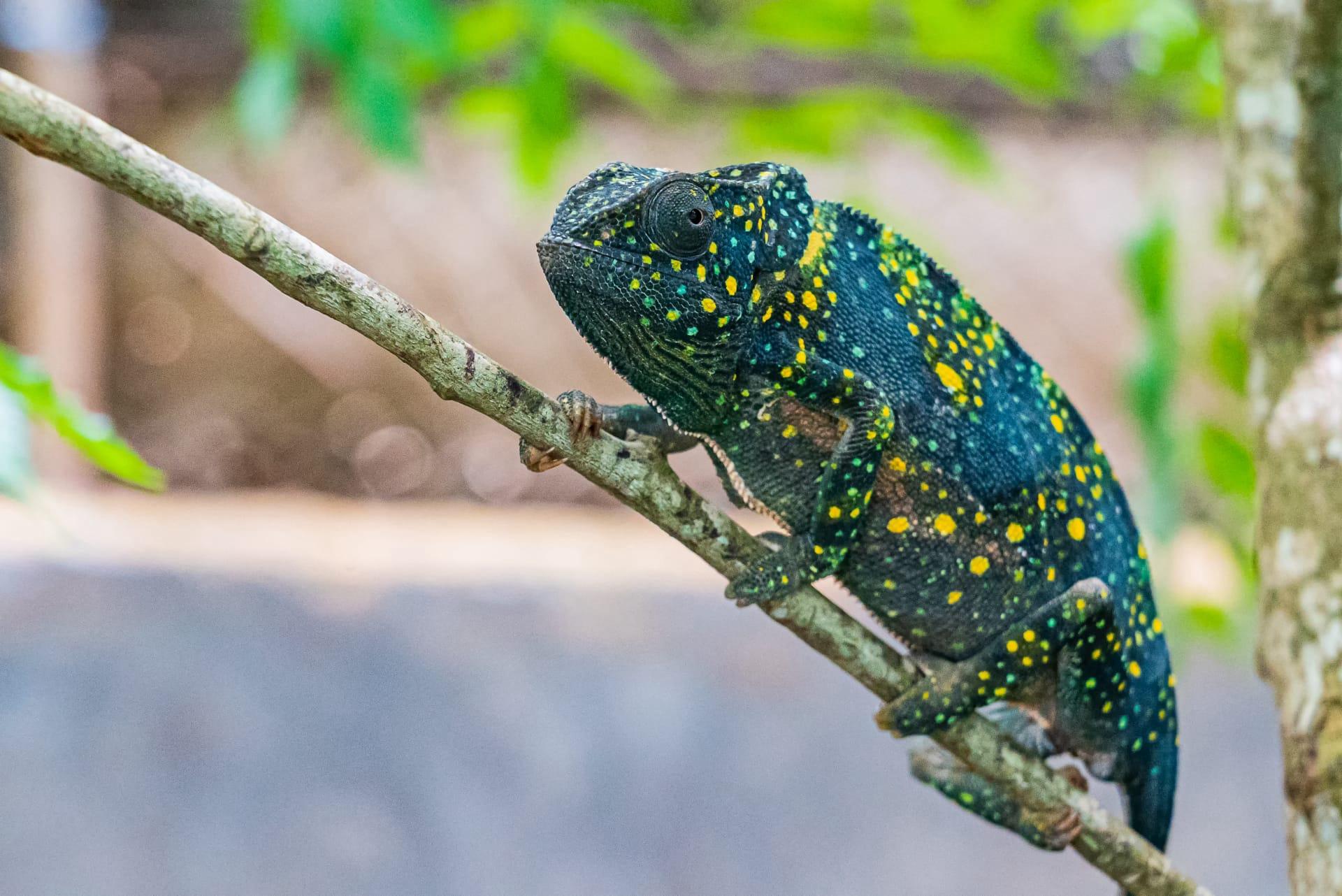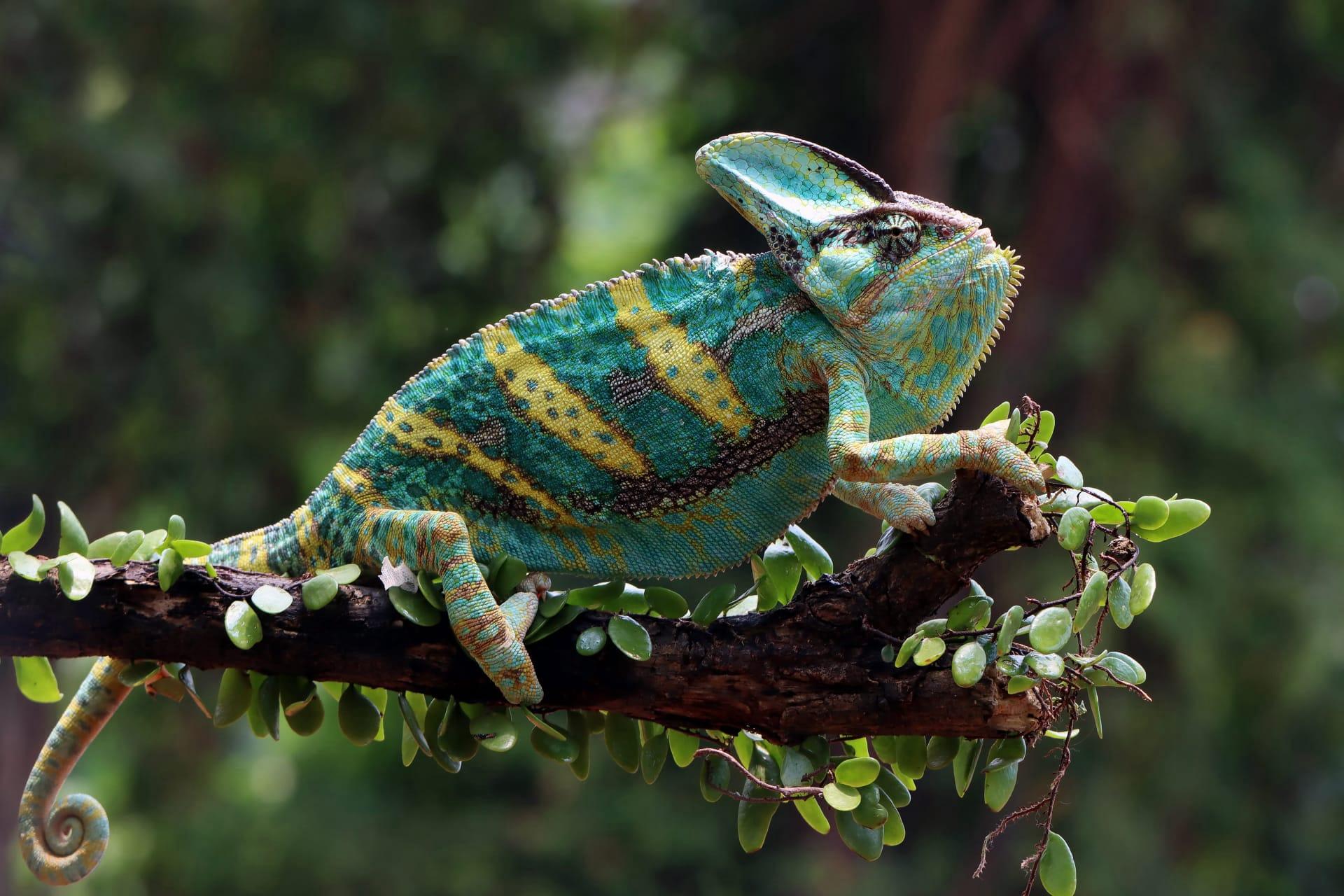Veiled Chameleon
- Home /
- Mini Encyclopedia /
- Animal /
- Veiled Chameleon
1
The Veiled Chameleon, scientifically known as Chamaeleo calyptratus, is a fascinating species belonging to the Chamaeleonidae family. This reptile is a master of disguise, not just in color but also in its physical structure. Their zygodactylous feet, prehensile tail, and protruding eyes, each capable of moving independently, are some distinctive features. They have a casque, a helmet-like ridge, on their heads, which is where they get the "veiled" part of their name. This species is known for its ability to change skin color, a trait often misunderstood and sensationalized.
Native to the Arabian Peninsula, specifically Yemen and Saudi Arabia, the Veiled Chameleon thrives in a range of habitats. These include mountainous areas, valleys, and even human-altered environments. They are usually found in altitudes ranging from sea level to about 3,000 feet. Interestingly, due to their popularity in the pet trade, they have been introduced to parts of Florida and Hawaii. In these non-native environments, they adapt to a similar habitat as their original home, often in humid, warm areas with plenty of vegetation.

2
Question: Do Veiled Chameleons change color to match their environment?
Answer: This is a common misconception. Veiled Chameleons primarily change color for communication and temperature regulation rather than for camouflage. They display different colors when expressing dominance, submission, or stress. For example, bright colors often signify aggression or a display of dominance, while darker colors might indicate stress or fear. Additionally, they adjust their colors for thermoregulation. Darker colors absorb more heat, helping them warm up, while lighter colors reflect sunlight to cool down.

3
Veiled Chameleons have evolved several unique survival strategies. One key aspect is their specialized vision. Their eyes can rotate independently, allowing them to look in two different directions simultaneously. This gives them a significant advantage in spotting predators and prey. They also have a remarkable tongue, which can be twice as long as their body and is used to catch prey from a distance. The tongue shoots out rapidly, taking prey by surprise.
Their ability to change color also plays a role in their survival. This feature is used for social signaling as well as thermoregulation, as mentioned earlier. Furthermore, Veiled Chameleons are adept at remaining still, blending into their surroundings. This stillness, combined with their color-changing abilities, makes them less visible to predators and prey.

4
In their ecosystem, Veiled Chameleons play a critical role as both predators and prey. They contribute to controlling insect populations, as their diet mainly consists of insects. By managing these populations, they help maintain a balance in their habitat, which is crucial for the ecosystem's health.
As prey, they are part of the food chain, supporting larger predators. Their presence in an ecosystem indicates a healthy environment, as they require specific conditions to thrive. Thus, they can also be seen as indicators of environmental health. Their sensitivity to changes in their habitat makes them vulnerable to environmental disturbances, making their conservation important.

5
Film: "Secrets of the Chameleon" is a fascinating documentary produced in the United States in 2019. It delves deep into the lives of Veiled Chameleons, exploring their unique adaptations, behavior, and role in the ecosystem. The film showcases stunning visuals of these creatures in their natural habitat, highlighting their ability to change color and their peculiar hunting tactics.
Book: "Chameleons: Nature's Hidden Jewels" by David Alderton, published in the UK in 2021, offers an extensive look into the world of chameleons, including the Veiled Chameleon. It provides detailed information on their biology, behavior, and care in captivity. The book is renowned for its comprehensive coverage and vivid photography.
Book: Another remarkable read is "The Chameleon Handbook" by Francois Le Berre, published in France in 2020. This book delves into various aspects of chameleon care, focusing on species like the Veiled Chameleon. It combines scientific information with practical advice, making it an invaluable resource for both chameleon enthusiasts and researchers.